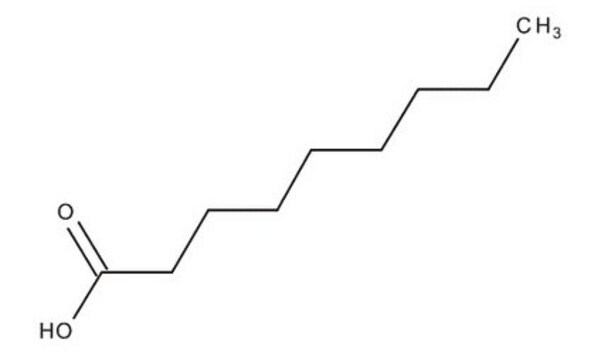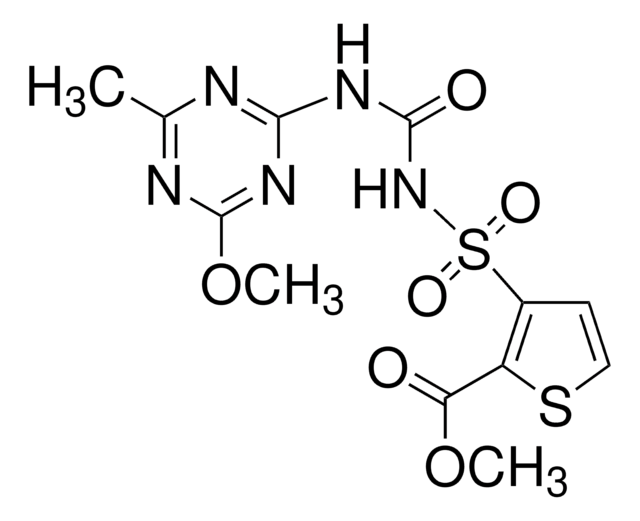73982
Nonanoic acid
analytical standard
Sinónimos:
Acid C9, Pelargonic acid
About This Item
Productos recomendados
grado
analytical standard
Nivel de calidad
densidad de vapor
5.5 (vs air)
presión de vapor
<0.1 mmHg ( 20 °C)
Análisis
≥99.5% (GC)
caducidad
limited shelf life, expiry date on the label
lim. expl.
9 %
técnicas
HPLC: suitable
gas chromatography (GC): suitable
índice de refracción
n20/D 1.432 (lit.)
n20/D 1.432
bp
268-269 °C (lit.)
mp
9 °C (lit.)
densidad
0.906 g/mL at 25 °C (lit.)
aplicaciones
cleaning products
cosmetics
flavors and fragrances
food and beverages
personal care
formato
neat
grupo funcional
carboxylic acid
Condiciones de envío
ambient
temp. de almacenamiento
room temp
cadena SMILES
CCCCCCCCC(O)=O
InChI
1S/C9H18O2/c1-2-3-4-5-6-7-8-9(10)11/h2-8H2,1H3,(H,10,11)
Clave InChI
FBUKVWPVBMHYJY-UHFFFAOYSA-N
¿Está buscando productos similares? Visita Guía de comparación de productos
Aplicación
Palabra de señalización
Warning
Frases de peligro
Consejos de prudencia
Clasificaciones de peligro
Eye Irrit. 2 - Skin Irrit. 2
Código de clase de almacenamiento
10 - Combustible liquids
Clase de riesgo para el agua (WGK)
WGK 1
Punto de inflamabilidad (°F)
278.6 °F - Pensky-Martens closed cup
Punto de inflamabilidad (°C)
137 °C - Pensky-Martens closed cup
Equipo de protección personal
Faceshields, Gloves, Goggles, type ABEK (EN14387) respirator filter
Elija entre una de las versiones más recientes:
¿Ya tiene este producto?
Encuentre la documentación para los productos que ha comprado recientemente en la Biblioteca de documentos.
Los clientes también vieron
Protocolos
In this study, SPME was used for the analysis of free fatty acids in Parmesan cheese using a 65 μm Carbowax/divinylbenzene (DVB) SPME fiber. Headspace extraction of the cheese sample was conducted at 65 °C for 15 minutes and analyzed by GC with FID detection. SPME is ideal for analyzing the volatiles associated with solid food samples. The phase chemistry of the Nukol GC column provides excellent peak shape of acidic compounds.
Nuestro equipo de científicos tiene experiencia en todas las áreas de investigación: Ciencias de la vida, Ciencia de los materiales, Síntesis química, Cromatografía, Analítica y muchas otras.
Póngase en contacto con el Servicio técnico














